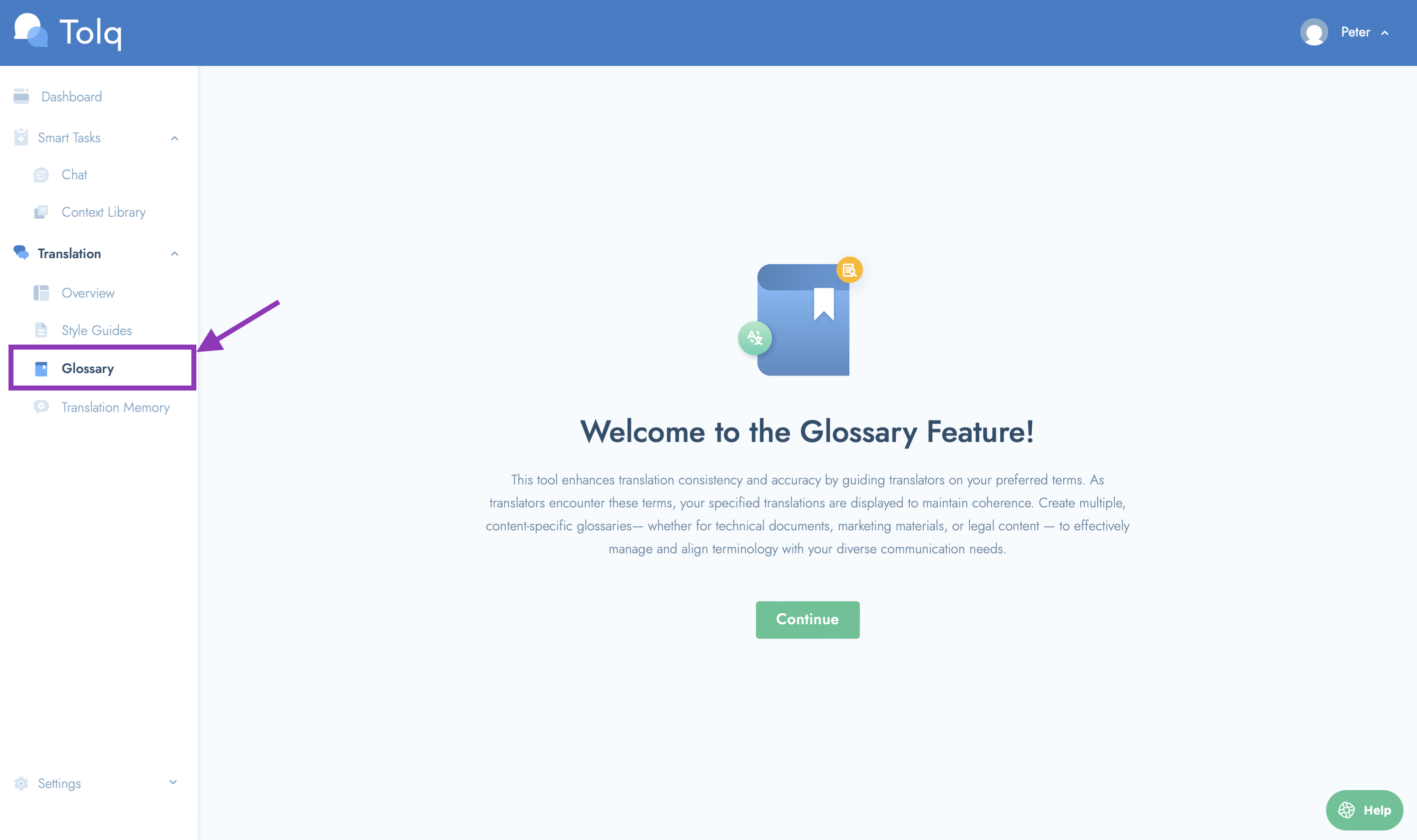Glossaries - overview
What is a Glossary?
A glossary is a curated list of terms in multiple languages, essential for precise translation. By providing translators with your glossary, they can tailor the translation to align with your unique marketing strategies, products, and concepts. This not only expands your audience reach but also ensures that your brand's distinct personality and strategies are effectively communicated, amplifying the desired impact on your new audience.
Your branding sets you apart, with your website showcasing why your company and product stand out. While we pair you with a translator specializing in your field, translations are inherently personal. A glossary serves as a guiding beacon, enabling translators to meet your expectations seamlessly.
Preparations for your Glossaries
Optimising Glossaries for Effective Translations
When preparing your glossaries, consider the unique terminology used on your website, in emails, and other communication channels. Identify terms that are integral to your product descriptions, linked to key concepts, or embedded in your company's strategy. Your business has distinct qualities; pinpoint terms associated with these qualities as they form the core of your company's identity.
For instance, in a web shop, product descriptions often include industry-specific terms or "jargon" that define the products. To ensure accurate translation and alignment with your expectations, it's advisable to include these terms in your glossary.
Examples of things to include in your Glossary:
Product Jargon and company specific terms:
- Example: In a web development context, terms like "breadcrumb navigation," "parallax scrolling," or "API integration" are industry-specific jargon that should be included in the glossary for accurate translation. These technical terms carry specific meanings within the field and warrant precise translation to maintain clarity and coherence in your website content.
Non-Translatable Information:
- Example: Certain brand names or product names, such as "iPad" for Apple, should remain unchanged in translation. Include these in the glossary to instruct translators about items that should not be translated.
Conceptual Categories:
- Example: Identify broader conceptual categories, such as specific marketing strategies or brand positioning terms, that are integral to your company. Include these in the glossary to ensure consistency in conveying key concepts.
SEO Keywords:
- Boost the search engine visibility of your content by strategically integrating SEO keywords into your glossary. It's essential to conduct thorough keyword research beforehand. Entering the researched keywords into a Glossary will advise the translators of which words to use for certain translations.
By thoughtfully compiling your glossary with these considerations, you empower translators to maintain accuracy and align with the unique language nuances of your business.
For more information on preparations, please read the article "Considerations and Preparations" here.
How to access your Glossaries
You can navigate to your Glossaries in the navigation bar on the left side of the screen:

How to create and maintain Glossaries
For a detailed guide on how to create, maintain and order with your glossaries, please see the article here.
